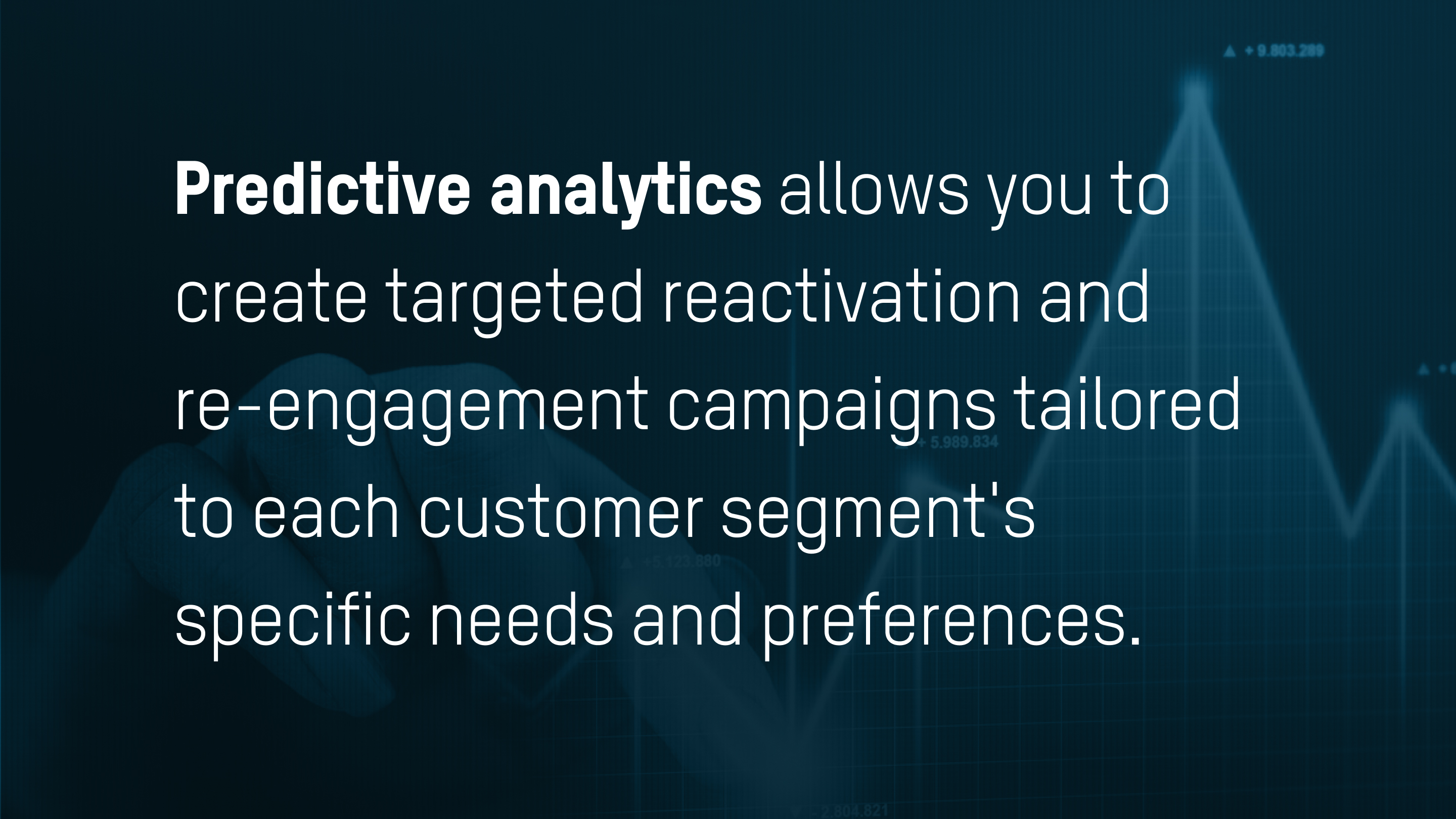Think of data as your set of eyes through the maze of consumer behavior. Without it, you're bound to get lost.
Leveraging customer data is the key to understanding your consumers and finding the best ways to fulfill their needs and expectations in today’s ever-changing marketplace.
This is where predictive analytics comes in. Powered by machine learning technology, this form of advanced analytics can illuminate future outcomes and trends to improve customer relationships.

Peer into the crystal ball
Predictive analytics is more than just understanding your customers. It takes data analytics further, allowing you to foresee your customers’ next moves (like gazing into a magical crystal ball).
With the predictive analytics model, you get to uncover customer needs or concerns before they even arise. So instead of reacting to them as they come up, you can take proactive steps, such as sending service maintenance reminders ahead of time or rolling out new product features to enhance their overall customer experience.
This proactive approach to customer relationship management (CRM) is a great way to demonstrate how well you know your customers and how committed you are to giving them the best experience possible—increasing customer satisfaction, consumer trust, and customer loyalty.
How exactly does predictive analytics help improve your CRM?
#1 It helps you determine the likelihood of an action taking place
The key to successful conversion lies in repeated engagement. That’s why marketing is typically sequenced. For example, after placing a targeted search ad, you may follow up with a specific email to their inbox, and subsequently, offer an exclusive discount until they make a purchase. You don't connect with targeted customers just once and give up. Instead, you persistently engage with them.
But the crucial thing to remember here is this: you have to follow the optimal sequence of actions to engage your audience effectively. This can be achieved through predictive analytics. Through big data from predictive modeling, you can make more informed decisions regarding the most effective approach to engage your customers and drive conversions. In marketing, we commonly refer to this as sequencing.
Sequencing involves predicting what might happen next based on the order of actions. Through predictive analytics, you can determine the likelihood of an action occurring within a specific sequence.
For instance, think about your customers’ ordering behaviors. If they usually get a pizza after ordering pasta, sequencing looks at how likely they'll add a dessert to their order afterward. By looking at many of their past orders, you can determine the chances of your customer getting a dessert after pasta and use that data to foresee their future orders.
Sequencing from predictive analytics helps you determine the pattern or likelihood of how your customer makes choices in a certain order. This, in turn, benefits you by providing actionable insight into customer behaviors, enabling you to tailor marketing strategies, anticipate needs, and deliver personalized content, ultimately enhancing customer engagement.
If you don’t have enough historical data, you can simply look at the most recent successful event to predict future behavior. It's likely that one customer will follow a similar purchasing journey to another. It’s not as reliable as sequencing, but it can be a good starting point.
#2 It helps you to re-engage inactive customers
Predictive analytics isn’t just for active customers, it’s also for inactive ones. With the predictive model, you gain actionable insights into winning back your customers who, for numerous reasons, have gone idle or chosen to disengage with you.

Through predictive analytics, you get to categorize inactive customers into segments based on their behaviors and characteristics. This allows you to create targeted reactivation and re-engagement campaigns tailored to each customer segment's specific needs and preferences.
For example, predictive models anticipate which offers are likely to resonate with inactive customers, be it an incentive or personalized content. This ensures that re-engagement messages are optimally built out for maximum conversion.
Aside from that, predictive analytics can help determine the likelihood of positive responses to re-engagement efforts among inactive customers. This scoring method helps you prioritize efforts on customers with a greater chance of successful reactivation or re-engagement.
Hastily trying to win back your customers can push them farther away. So before you try to win their hearts, you ultimately need to understand why they left in the first place to make the necessary adjustments.
#3 It lets you create the most effective product bundles
Customers enjoy purchasing bundled products, but bundling is more than just combining items or offering complementary products based on what makes the most sense to you. It requires a data-backed approach, and this is where predictive analytics is also vital.
Predictive analytics enhances your cross-selling and upselling strategies by predicting which products or services your customers are likely to buy. By examining their preferences and purchasing behaviors, you can identify products or services that are usually purchased together and let that be your guiding light.
Consider an automotive parts retailer looking to boost sales of accessories and maintenance products. Predictive analysis can help the business analyze customers' vehicle purchase history, service data records, and online behavior to propose relevant aftermarket products for successful cross-selling.
Predictive analytics can go as far as predicting which customers are likely to respond positively to cross-selling and upselling efforts, identifying products or services most relevant to them. Undoubtedly, this advanced form of data analysis can help you create more targeted and effective strategies for driving revenue growth.
Indeed, data analytics, specifically predictive analytics, serves as your eyes on the marketing battlefield, helping you spot opportunities from afar and detect potential risks before they even hit you. This level of foresight that predictive analytics provides can give you an upper hand in navigating the unpredictable consumer landscape.



